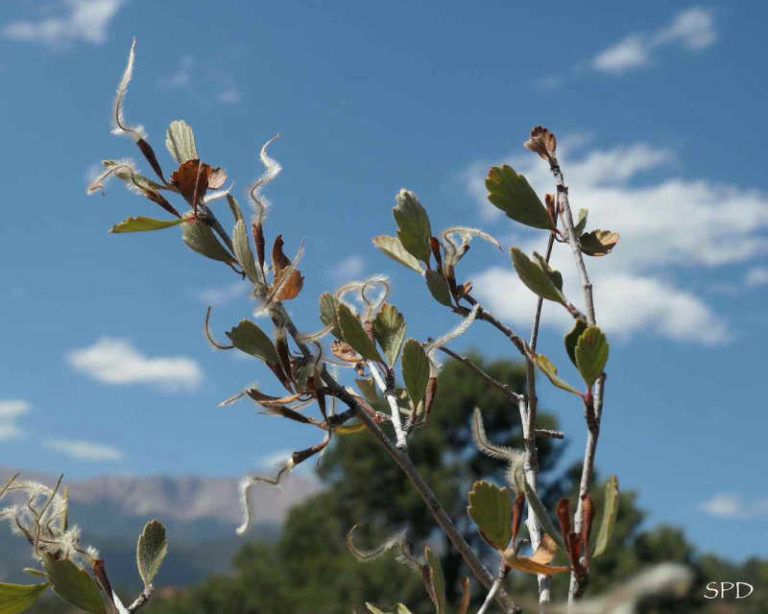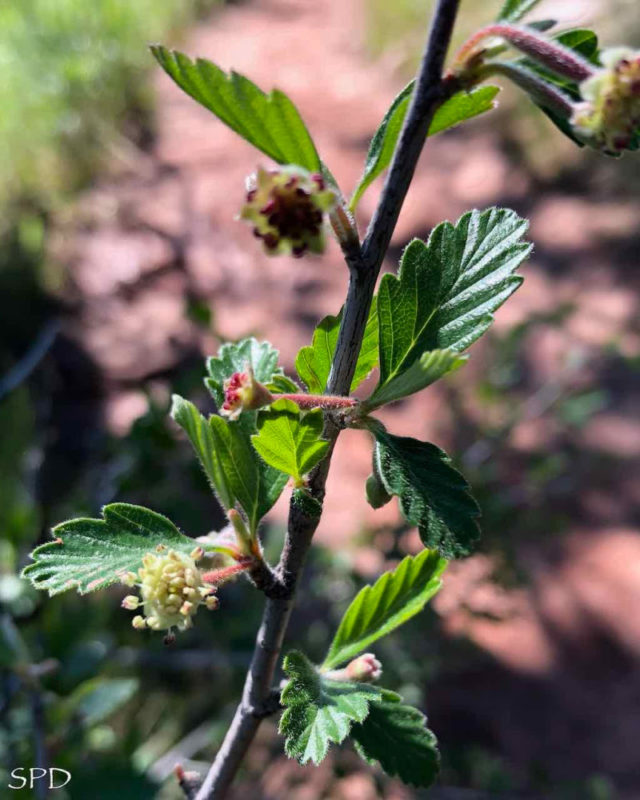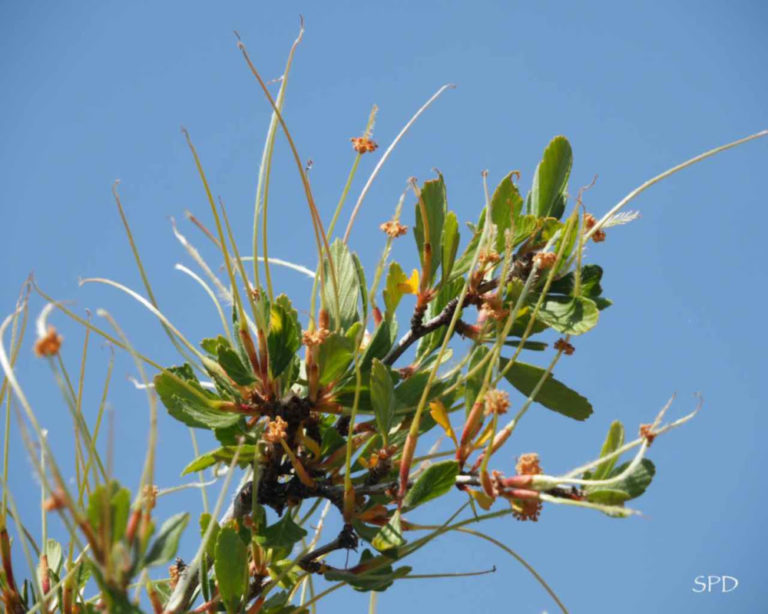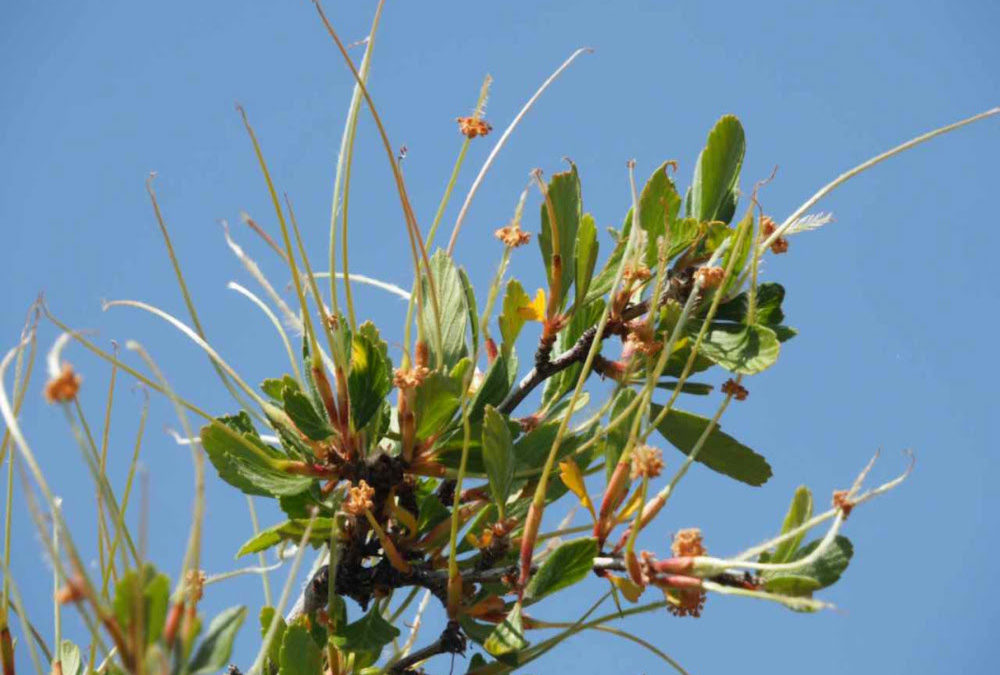In the case of Mountain Mahogany, not much! Cancel any images of grand and stately trees bravely crowning mountaintops, this Colorado native rarely reaches 16 feet. And, partly because it is a favorite browse-snack for deer and elk, its stature is more contorted than stately. As always, the common name of a plant can be confusing.
Even its association with the word mahogany comes, not from its botanical family affiliation, (mahogany trees are in the family Meliaceae, mountain mahogany belongs in the Rosaceae family), but from the color of the rich red-brown dye that can be made from its bark. Native Americans used this dye to give distinctive color to their baskets and leather goods. Its hard wood, although too short and twisty for building, was used for burning, and for making hand tools.
In contrast, the scientific name, Cercocarpus montanus, (ser-co-KAR-pus mon-TAY-nus), conveys good information. Cerocarpus gives us, from the greek word, kérkos, tail; and from kerpós, fruit. So we come to “tailed fruit,” and these two words together give an accurate description of one of the plant’s most interesting features, the delightful feathery little plume attached to the seed. When I come across these on the trail, I can’t help but think they are perfect botanical expressions of the line from Dylan’s Mr. Tambourine Man;

“Yes, to dance beneath the diamond sky with one hand waving free…”
According to the Flora of Colorado by Jennifer Ackerfield, (available in our bookstore) we have three species of mountain mahogany here: Cerocarpus montanus, C. ledifolius, and C. intricatus, with the common names, respectively, of birchleaf, curl-leaf, and dwarf mountain mahogany. Flowers of the birchleaf mountain mahogany, which is the most common of the three species and widely distributed, appear in May and can be seen throughout June. They are tiny, but intricate, and beautiful when you take a moment to stop and observe them.

Flowers of mountain mahogany are tiny, but intricate and beautiful if you stop to observe them
And here begins the story of the plume. As the flowers begin to fade, the part called the style, which connects the pistil, the female reproductive organ, to the ovary where the seed is formed, begins to elongate. Eventually it becomes the means of conveyance by which the seed can become airborne and be transported to a new home.

The style becomes elongated as the flowers of birchleaf mountain mahogany fade.
Look for mountain mahogany on hillsides, often steep ones, where it is happy in rocky, gravelly sites with plenty of sun and minimal water, starting at about 4,000 feet. Frequently found with pinyon-juniper, oaks, ponderosa pines, and douglas firs, this native plant is important food or cover source for a variety of wildlife, including birds, butterflies, and bees. Many of those plumose styles persist on through the winter, and give you a big clue as the plant’s identity!

Birchleaf mountain mahogany shines in winter’s sun.
Sue Dingwell
Media Committee, CoNPS
Birchleaf mountain mahogany is found in many places, just a few where it has colonies here:
Hall Ranch Open Space
White Ranch Park, Belcher Hill-Mustang Trail
Galbraith Park

